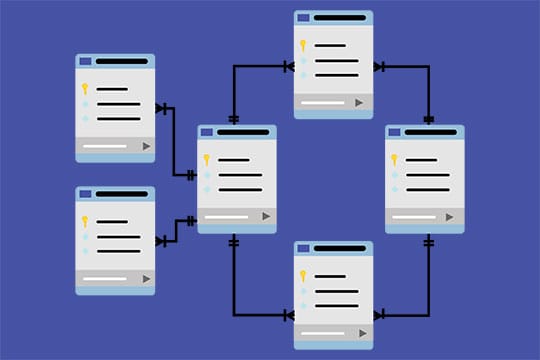Data breaches are so common that they are not even surprising anymore. Malicious actors aim to collect as much data as possible. They are after login credentials, credit card information, or trade secrets. Once they get their hands on such data, they sell it on the dark web.
If you can’t grasp how much data they stole so far, and how much they dumped on the dark web, here is a worrying number. Last year, criminals stole and sold 620 million accounts from sixteen hacked websites alone. Yes, hacking sixteen websites can lead to so much damage. But you know what’s worse? Thousands of new sites are hacked every day!
Cybercriminals come up with new hacking methods daily. But it doesn’t mean they forget older techniques, such as SQL injections. They are still one of the most common attack vectors that are simple to execute and yield fruitful results.
What Is SQL Injection and Why Is It Dangerous?

SQL Injection, also known as SQLi, is a form of an injection attack, which enables the hacker to execute an SQL statement. Injection attacks are a broad category of different attack vectors. But they all allow malicious actors to perform dangerous inputs. They act as a system command, which is then executed.
SQL statements are most commonly used to add or retrieve data from various databases. A lot of famous management systems such as Microsoft SQL Server, Access, and Oracle use these statements.
Since many widely-used database management systems use SQL statements, hackers can exploit these systems through SQL injections. It means that criminals can access and steal sensitive data stored in the database. It can include the following:
- intellectual property.
- credit card information.
- customer information.
- addresses.
- company secrets.
Recommended for you: Chrome vs Firefox: The Performance, Security & Privacy Comparison!
How Does SQL Injection Work?

To execute an SQL injection attack, the hacker has to locate vulnerable user inputs within the website or internal applications of the company.
For example, the victim uses WordPress for their website. The code may have an SQL vulnerability that sends user input directly to the database without any sanitization. If a hacker locates that vulnerability, they can send commands to the database in question. Then, the database output goes back to the browser and enables the hacker to execute different commands. This way, they can download the whole database, set up new commands, modify user accounts, or create new accounts.
There are three primary forms of SQL injection attacks:
- In-band SQL injection:
- Error-based SQL injection.
- Union-based SQL injection.
- Blind SQL injection:
- Boolean.
- Time-based.
- Out-of-band SQL Injection.
In-band SQL Injection
The In-band SQL injection is one of the most common types because it’s simple and efficient. Here, the attacker uses the same communication channel to execute the attack and to collect results. It has two sub-variations – Error-based and Union-based SQL injection:
- Error-based SQL injection allows the hacker to cause the database to produce error messages. Then, they can use these error messages to gather information about the database itself.
- Union-based SQL injection enables the culprit to take advantage of the UNION SQL operator. It combines different statements provided by the database to get one HTTP response. Such a response often contains data that hackers can exploit.
Blind SQL Injection
Blind SQL injections rely on the behavioral patterns of the server. They are much slower to execute. The hacker emits data payloads and inspects the response of the server to analyze its structure. They call this “blind” because the data doesn’t go directly to the hackers. Thus, they cannot see any information about the exploit in-band. It comes in two variations, namely Boolean and Time-based:
- Boolean variation allows the hacker to send an SQL query, which prompts the database to return information. The information within the HTTP response changes depending on the previous result.
- Time-based variation enables the malicious actor to send an SQL query directly to the database, which forces the database to wait before it can react. The attacker takes notice of the time needed for the database to respond and decide whether the query is true or false. Based on the result, the HTTP response is instant or delayed.
Out-of-band SQL Injection
Out-of-band SQL injection allows the hacker to attack the database only if specific features are enabled on the database server. It is the least popular SQL injection method. Many hackers use it as a replacement for Error-based and Blind SQL injections.
This particular attack is an option when the hacker can’t use the same medium to execute the attack and collect information. Or, they can use this injection when a server is unstable and slow for performing the other two injection types. This technique creates DNS and HTTP requests to forward the stolen data.
You may like: Cybersecurity Risk Assessment & Management Tips for Small Businesses.
Is This Threat Still Relevant?

SQL injections are one of the oldest forms of aggressive cyberattacks. Yet it is still very much relevant. The Open Web Application Security Project listed SQL injections as the number one threat two years ago. Cloud service provider Akamai has created a State of the Internet Report, which found that SQL injections were responsible for 65% of all web-based attacks from 2017 to 2019. So you can say that SQL injection still appears in two-thirds of web attacks in recent years.
In the first quarter of 2017, these vectors were responsible for 44% of application-layer attacks. To make matters even worse, no other form of application attack vector grows as fast as SQL injections. In November 2018, there was another significant spike. It has shown that there were over 35 million SQL injection attack attempts. Experts think that the leading cause of this spike was the holiday season. It is something all website owners should be aware of – especially if they’re in the retail industry. But even after the holiday season is over, SQL injection remains a threat you need to be aware of.
The United States is the top target for application-layer attacks. It has faced around 3 billion attacks in only 17 months. Other popular victims include the United Kingdom, Germany, Brazil, India, Japan, Canada, Australia, Italy, and the Netherlands. So, it is safe to assume that it is still a huge threat and that all companies should take extensive precautionary measures.
Security Tips for Prevention

The best course of action for developers is to introduce precautionary measures to prevent the attacks from ever occurring. These are the most effective prevention measures:
- Input Validation: Input Validation verifies whether any particular user input is allowed or not. That means that format, length, and type have to be collectively accepted. It is helpful for fighting commands that hacker’s plant in the input string.
- Parameterized Queries: Parameterized queries are a way to pre-compile different SQL statements. It then stocks the parameters so the statement could be executed. It enables the database to recognize the code and differentiate it from regular input data.
- Stored Procedures: They need the developers to cluster one or many SQL statements into a logical unit. It is a form of code that one can store, as the name suggests, and save for later.
- Escaping: Developers should use character-escaping features to ensure that the DBMS doesn’t confuse the user input with an SQL statement.
- Web Application Firewall: It is one of the safest methods to prevent SQL injection attacks. The firewall monitors the traffic which circulates to and from the server. It identifies which requests are potentially harmful and which ones aren’t. This solution is sufficient for many other exploits, so it’s always decent.
- Avoiding administrative privileges: Developers should never connect their apps to the database through accounts with root access. Otherwise, hackers could get access to the whole system and cause irreparable damage. Moreover, developers should make sure that every database has its own set of credentials with limited.
You may also like: Top 10 Best Selling Internet Security Software (Antivirus & Security).
Final Words

Anyone concerned about SQL injection shouldn’t forget other possible attacks, either. The usual cybersecurity practices apply: use robust passwords, learn to recognize threats, turn on a VPN any time you connect to websites or databases, and so on. What is a VPN and what does it do? It encrypts your online traffic anytime you go online. So, if you send a SQL request to your database, only the DB can decrypt it. If someone intercepts the data packets in question, they won’t make any sense of them. The more ready you or your company are for all kinds of threats, the better.
Only the introduction of comprehensive preventative measures ensures that SQL injection or attacks are never successful. Be ready to invest a lot of time, effort, and money to make sure that you have the proper tools to fight various exploits.





